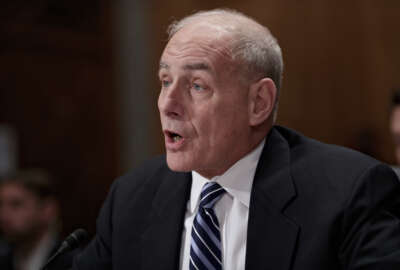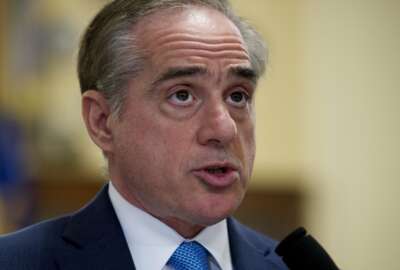
Spending on DoD contract obligations in FY 2016 reverses downward trend
In today's Federal Headlines, the amount of money the Defense Department dedicated towards contract spending rose last year.
The Federal Headlines is a daily compilation of the stories you hear discussed on Federal Drive with Tom Temin.
- The amount of money the Defense Department dedicated towards contract spending rose last year. According to a new report from the Center for Strategic and International Studies, DoD contract obligations went up by 7 percent in 2016. This comes after a steady decline over the past seven years. CSIS said the trend was mostly due to increased obligations for large procurement programs. (Center for Strategic and International Studies)
- Sens. Rob Portman (R-Ohio) and Tom Carper (D-Del.) marked the 30-year anniversary of the Thrift Savings Plan with a new bill to ease the plan’s strict withdrawal rules. The bill would let federal retirees make multiple post-separation withdrawals instead of only the two allowed now. Federal retirees currently transfer about $9 billion out of their TSP accounts every year. (Sen. Rob Portman)
- Groups that deal with the federal government weighed in on the hiring freeze. A case in point, a group calling itself the Alliance of U.S. Startups and Inventors for Jobs urged continued hiring at the Patent and Trademark Office. The Silicon-Valley-oriented group, in a letter to President Donald Trump, argued PTO is funded by fees from applicants, and not by appropriations. It said those fees should go to PTO, not to general federal expenditures. (Alliance of U.S. Startups and Inventors for Jobs)
- The federal hiring freeze is slowing the Defense Department’s ability to process incurred cost audits. The audits review contract-related expenditures companies charge back to DoD. Anita Bales, director of the Defense Contract Audit Agency, said the hiring freeze is keeping the agency from making headway on its audit backlog and the agency is understaffed. (Federal News Radio)
- Guidance put forth by the White House lays out how agencies are to implement President Donald Trump’s two-out one-in policy when it comes to issuing new regulations. Acting Administrator for the Office of Information and Regulatory Affairs Dominic Mancini said requirements for agencies should include offsetting the cost of new regulations with the savings of repealed ones. (The White House)
- The acting federal cyber executive offered an important reminder to agencies and contractors alike. The acting federal chief information security officer laid out three priorities for 2017 starting with the long-held goal of getting off of legacy IT. Grant Schneider said the Office of Management and Budget is working with agencies not just to modernize systems, but take advantage of cloud, shared services and an architecture that is both secure and flexible. Schneider said industry can help meet those goals by bringing agile tools that solve both the problems of today and tomorrow.
- The social media site Twitter is suing the federal government. The company said the Homeland Security Department and Customs and Border Protection tried to force it to reveal who is behind accounts allegedly run by federal employees critical of President Donald Trump’s policies. Twitter argued these actions violated its users’ rights of free speech.
- Archivist of the United States David Ferriero said federal agencies can do more to strengthen the backbone of open government and records management. The National Archives released federal agency records management information including about how agencies manage their email. Early data shows full compliance has yet to be reached, but results are “trending positive.” (National Archives)
- The Veterans Affairs Department’s inspector general is changing how it inspects VA hospitals and clinics. Starting this month, medical facility inspections will be handled under a new system called the Comprehensive Healthcare Inspection Program, or CHIP. The IG said local administrators will receive less advance notice than they have in the past that their health care facilities are up for inspection, and, for the first time, inspectors will examine leadership and organizational risks at each clinic or hospital, including how a facility’s management correlates with patient outcomes and employee satisfaction. (Department of Veterans Affairs Office of Inspector General)
Copyright © 2025 Federal News Network. All rights reserved. This website is not intended for users located within the European Economic Area.
Eric White
Eric White is news anchor and Federal Drive producer at Federal News Network.
Follow @FEDERALNEWSCAST





